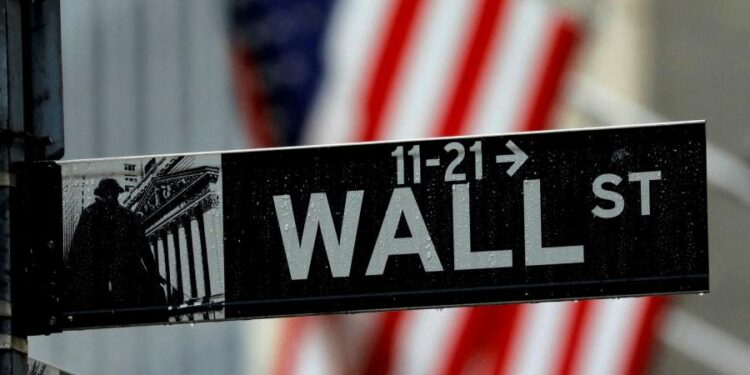European stocks opened the week on a broadly steady footing after a period of choppy trading driven by uncertainty over central banks’ next steps, but Italian markets stood out with declines.
Stocks in Italy — widely seen as one of the most vulnerable countries in the euro area in the event of rising interest rates — dropped 1.2 per cent, while the regional Stoxx 600 index, which has lost more than 5 per cent so far this year in a move echoing declines on Wall Street, opened 0.7 per cent higher on Monday before settling back to a 0.1 per cent gain.
London’s FTSE 100 added 0.4 per cent, while futures markets implied that Wall Street’s S&P 500 and Nasdaq Composite would open broadly flat later in the day.
Equities have posted large intraday swings this month, with highly valued technology stocks posting unusual single-day gains and losses, as liquidity has thinned and traders struggle to transact large batches of shares.
“The market is lost,” said Samy Chaar, chief economist at Lombard Odier, as investors navigated trends of positive economic data and “further hawkish messages from central banks”.
US jobs data on Friday showed employers in the world’s largest economy added an unexpectedly high 467,000 new roles last month, signalling the resilience of the recovery from the coronavirus-driven shocks of 2020. But inflation data later in the week are expected to show consumer prices rose 7.3 per cent in the year to January, a fresh four-decade high.
“A record amount of stimulus is about to be withdrawn from the global economy,” said Andrew Sheets, strategist at Morgan Stanley, noting that major central banks are expected to shrink their balance sheets by $2tn in the 12 months from May this year. “For investors, the scale of what lies ahead means we think they should keep overall exposure light.”
In March 2020, global central banks pulled interest rates to historic lows and embarked on multitrillion-dollar purchases of bonds and other securities to suppress borrowing costs and encourage lending and spending.
Now the purchases are being wound down, the Bank of England has raised interest rates twice and the US Federal Reserve has signalled it is ready to act decisively to curb inflation. Markets last week priced in more than five quarter-point rate rises by the Fed this year and a faster move towards monetary tightening by the European Central Bank than its officials had anticipated just weeks ago.
Government bonds, under pressure as predictions of higher interest rates and sustained inflation lowered the appeal of fixed income-paying securities, have sold off in response.
The yield on the benchmark 10-year Treasury note, which moves inversely to its price, hit its highest level since January 2020 on Friday. This move moderated slightly on Monday, with the yield declining 0.02 percentage points to 1.91 per cent.
Eurozone bonds also weakened after Dutch central bank governor Klaas Knot on Sunday called for the ECB to accelerate the withdrawal of its pandemic-era bond purchasing programme.
The yield on Italy’s 10-year bond, a barometer for investors’ views on the financial prospects of weaker eurozone nations, rose 0.13 percentage points to 1.89 per cent. The Greek 10-year yield rose 0.25 percentage points to 2.34 per cent.
In Asia, China’s CSI 300 share index gained 1.5 per cent as oil producers rallied. Hong Kong’s Hang Seng index closed flat and Japan’s Nikkei 225 lost 0.7 per cent.
Brent crude, the global oil benchmark, fell 0.2 per cent to $93.11 a barrel, remaining around its highest since 2014.











